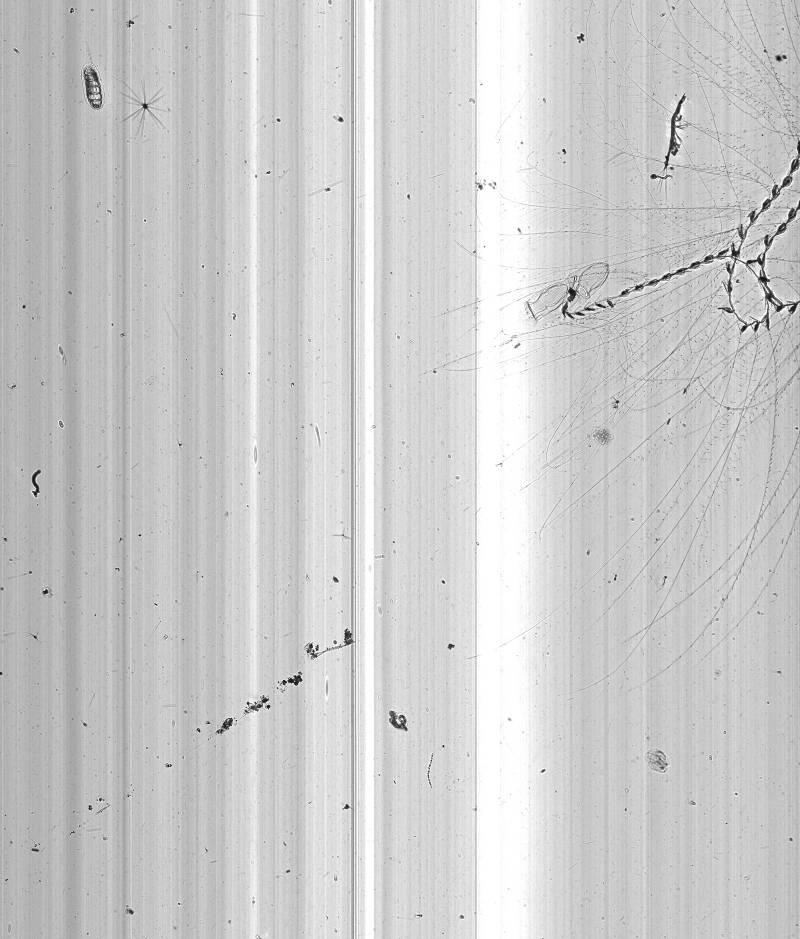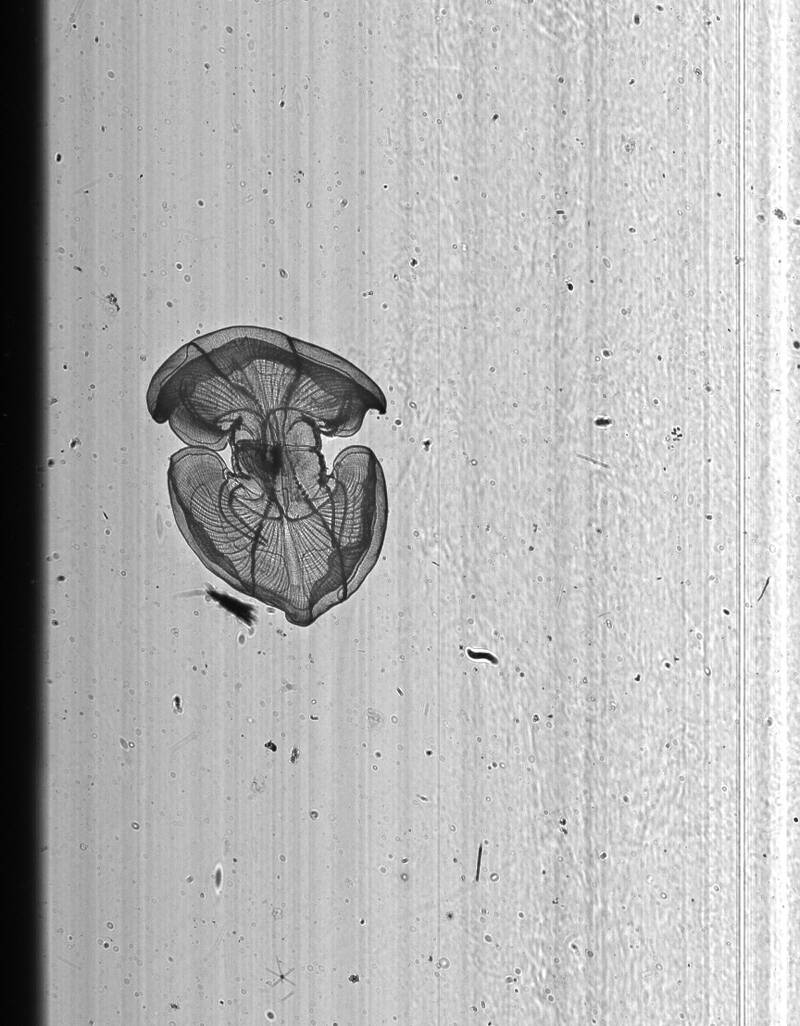
By Cedric Guigand, University of Miami, Rosenstiel School of Marine and Atmospheric Science
Kimberly Puglise, NOAA's National Centers for Coastal Ocean Science
August 23, 2014
Once the In-situ Ichthyoplankton Imaging System (ISIIS) has been deployed from the ship, Cedric Guigand monitors sensor outputs and the vehicle’s status from displays in the lab. ISIIS can be towed behind the ship for many hours, planing up and down to sample different depths in the water column. Video courtesy of Brian Cousin, Florida Atlantic University-Harbor Branch. Download (mp4, 29.1 MB)
Since the 1800s, marine biologists have been sampling the ocean's water column (the area between the surface of the ocean and the seafloor) using plankton nets. The simplest nets are towed behind a ship at an oblique angle, from a few meters above the seafloor to the surface, to collect a sample of what is found in the water column. While this is a useful method that provides valuable information about the organisms present in the water column, it doesn't tell us enough about their exact distribution.

A siphonophore, appendicularians, mysid shrimp, diliolid, cheatognath, and radiolarians pass in front of the In-situ Ichthyoplankton Imaging System (ISIIS) imaging sensor. Image courtesy of Cedric Guigand, University of Miami, Rosenstiel School of Marine and Atmospheric Science. Download larger version (jpg, 986 KB).
In the late 1970s, a new technology came along which sampled the water column by taking a burst of photographs. This technology, known as plankton imaging, made it possible to begin to understand the distribution of organisms in relation to each other and within the water column.
As photography has changed from film to digital imaging, so has plankton imaging. One of the recent advances in plankton imaging uses a digital system to capture images of the water column and is called the In-situ Ichthyoplankton Imaging System (ISIIS).
ISIIS captures the shadows of fragile and semi-transparent plankton and fish larvae while being towed behind the R/V Walton Smith at speeds up to five knots.

The stunning intricacy of a ctenophore is revealed in this In-situ Ichthyoplankton Imaging System (ISIIS) image. This ctenophore is only one centimeter across. Image courtesy of Cedric Guigand, University of Miami, Rosenstiel School of Marine and Atmospheric Science. Download larger version (jpg, 872 KB).
ISIIS is a "virtual" plankton net that goes up and down in the water column snapping pictures along the way. ISIIS works a bit like a submarine photocopier! It creates a high-resolution continuous image of the plankton while recording environmental data such as temperature, salinity, depth, dissolved oxygen level and more. Together, the camera and sensors provide detailed profiles of a plankter's location (plankter is the singular form of plankton), as well as the environment around it.
During this cruise, we used the ISIIS to image the water column over Pulley Ridge and in the Dry Tortugas, and explore the plankton communities living over these mesophotic reefs, including determining the distribution of fish larvae.
To see some images and learn more about ISIIS and how you too can get involved in plankton discoveries, see www.planktonportal.org .